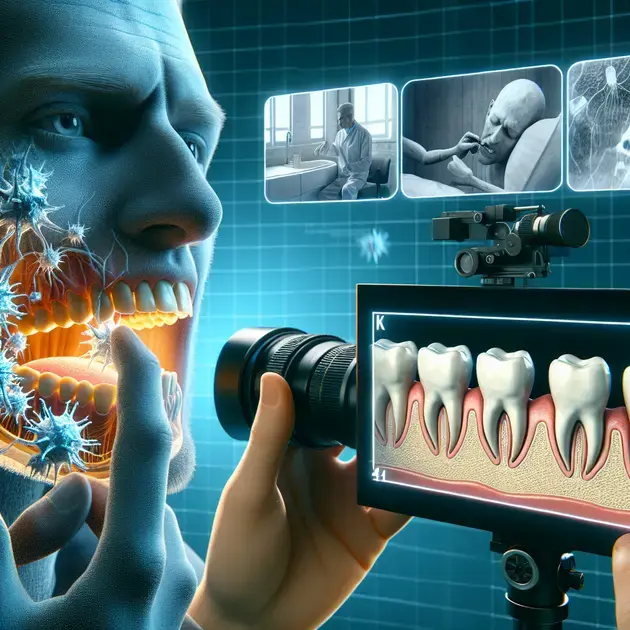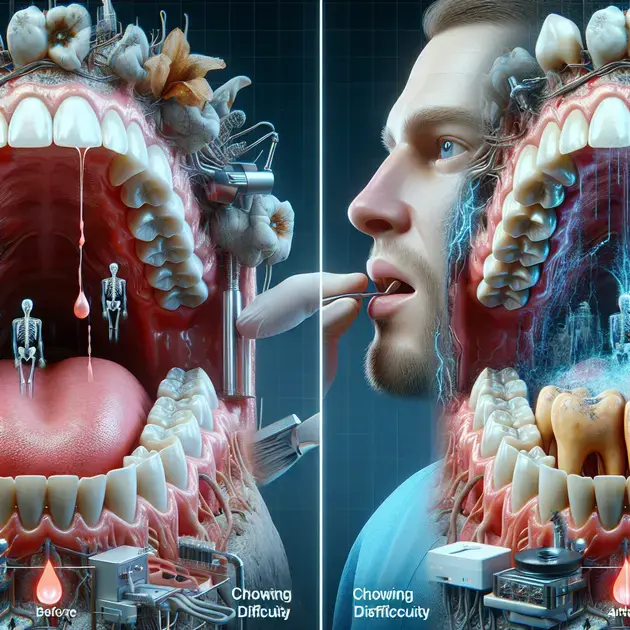When it comes to oral health, Tooth Decay is a common issue that affects people of all ages. Understanding the Causes, Prevention, and Treatment of Tooth Decay is crucial for maintaining a healthy smile and overall well-being.
Recent studies have shown that poor oral hygiene, high sugar consumption, and lack of regular dental check-ups are major contributors to Tooth Decay. By implementing preventive measures and seeking timely treatment, individuals can effectively combat this dental condition and preserve their oral health.

Understanding the Impact of Tooth Decay
When it comes to understanding the impact of tooth decay, it’s important to recognize that this common dental issue can have serious consequences if left untreated. Tooth decay occurs when plaque, a sticky film of bacteria, builds up on your teeth and produces acids that can erode the enamel. Over time, this erosion can lead to cavities, which can cause pain, infection, and even tooth loss.
To gain a better understanding of the impact of tooth decay, it’s essential to educate yourself on the signs and symptoms. These may include tooth sensitivity, pain when biting or chewing, visible holes or pits in the teeth, and discoloration. Regular dental check-ups can help detect tooth decay early on and prevent further damage.
One effective way to understand the impact of tooth decay is by using educational resources such as the American Dental Association (ADA) website. The ADA provides valuable information on the causes, prevention, and treatment of tooth decay, helping individuals make informed decisions about their oral health.
By understanding the consequences of tooth decay, individuals can take proactive steps to maintain good oral hygiene, such as brushing and flossing regularly, avoiding sugary foods and drinks, and visiting the dentist for routine cleanings and check-ups.
Preventive Strategies for Tooth Decay
Preventing tooth decay is key to maintaining a healthy smile and avoiding dental problems in the future. One of the most important preventive strategies is to practice good oral hygiene. This includes brushing your teeth at least twice a day with fluoride toothpaste, flossing daily, and using mouthwash to kill bacteria.
Another effective way to prevent tooth decay is by watching your diet. Limiting sugary and acidic foods and drinks can help reduce the risk of enamel erosion and cavities. Drinking plenty of water and eating a balanced diet rich in fruits and vegetables can also promote oral health.
Regular dental check-ups and cleanings are essential for preventing tooth decay. Dentists can identify early signs of decay, remove plaque buildup, and provide fluoride treatments to strengthen the enamel. Additionally, dental sealants can be applied to protect the teeth from decay.
Utilizing preventive strategies like those recommended by the Centers for Disease Control and Prevention (CDC) can help individuals lower their risk of tooth decay and maintain a healthy smile for years to come. By following these steps consistently, you can preserve your oral health and avoid costly and painful dental procedures in the future.
Effective Treatment Options for Tooth Decay
When tooth decay occurs, seeking prompt treatment is essential to prevent further damage and restore oral health. One of the most common treatment options for tooth decay is dental fillings. Fillings are used to fill in the cavities caused by decay, preventing bacteria from further damaging the tooth.
In cases where decay has progressed and affected the innermost layer of the tooth, a root canal may be necessary. During a root canal procedure, the infected pulp is removed, the tooth is cleaned and disinfected, and a filling or crown is placed to restore its function and appearance.
In more severe cases of tooth decay, extraction may be required to remove the damaged tooth and prevent infection from spreading. Dentists can recommend tooth replacement options such as dental implants, bridges, or dentures to restore the functionality and aesthetics of the smile.
Effective treatment options for tooth decay are best discussed with a qualified dentist or dental specialist. Websites like WebMD and Mayo Clinic offer valuable information on the different treatment methods available for tooth decay, empowering individuals to make informed decisions about their dental care.

**Understanding the Impact of Tooth Decay**
Tooth decay, also known as dental caries, is a widespread dental issue that affects people of all ages worldwide. It occurs when acids produced by bacteria in the mouth lead to the demineralization of the tooth enamel. This process can result in cavities, which are essentially holes in the teeth. The impact of tooth decay can vary depending on the severity of the condition. In the early stages, it may cause sensitivity and mild discomfort. However, if left untreated, tooth decay can progress and lead to more serious complications, such as toothache, infection, and even tooth loss.
One of the main consequences of tooth decay is the potential for oral infections. When cavities are left untreated, bacteria can penetrate the inner layers of the tooth, causing an infection that can spread to the surrounding tissues. This can result in abscesses, which are painful collections of pus that require immediate dental attention. Furthermore, severe tooth decay can also affect the pulp, the innermost part of the tooth that contains nerves and blood vessels, leading to inflammation and intense pain.
Another significant impact of tooth decay is its effect on overall oral health. Untreated cavities can weaken the teeth and make them more susceptible to further damage. This can compromise the function of the affected teeth, making it difficult to chew food properly. In addition, tooth decay can also contribute to bad breath, as the bacteria responsible for the decay produce foul-smelling gases as they break down food particles.
Moreover, tooth decay can have a detrimental impact on one’s quality of life. The pain and discomfort associated with dental caries can interfere with daily activities such as eating, speaking, and sleeping. In severe cases, tooth decay can even affect a person’s self-esteem and confidence, especially if it leads to visible changes in the appearance of the teeth. Therefore, understanding the impact of tooth decay is crucial for taking preventive measures and seeking timely treatment to maintain optimal oral health.
**Conclusion**
Understanding the impact of tooth decay is essential for individuals of all ages. It is a prevalent dental concern globally, stemming from the demineralization of tooth enamel due to acid-producing bacteria. This process leads to the formation of cavities, which, if left untreated, can progress to severe complications such as toothaches, infections, and even tooth loss.
One significant consequence of untreated tooth decay is the risk of oral infections. Bacteria can infiltrate deep layers of the tooth, potentially causing abscesses and inflammation in the pulp. This not only results in intense pain but also necessitates immediate dental intervention to prevent further complications.
Moreover, tooth decay significantly impacts overall oral health. Untreated cavities weaken teeth, making them more vulnerable to damage and compromising their functionality. This can hinder the ability to chew food properly and contribute to issues like bad breath, as decay-causing bacteria release malodorous gases during food breakdown.
Furthermore, the detrimental effect of tooth decay extends beyond physical discomfort. It can disrupt daily activities such as eating, speaking, and sleeping, impacting one’s quality of life. In severe cases, it can also dent an individual’s self-esteem and confidence, particularly if visible changes in teeth appearance occur. Hence, recognizing the grave repercussions of tooth decay underscores the importance of preventive measures and timely treatment in preserving optimal oral health.